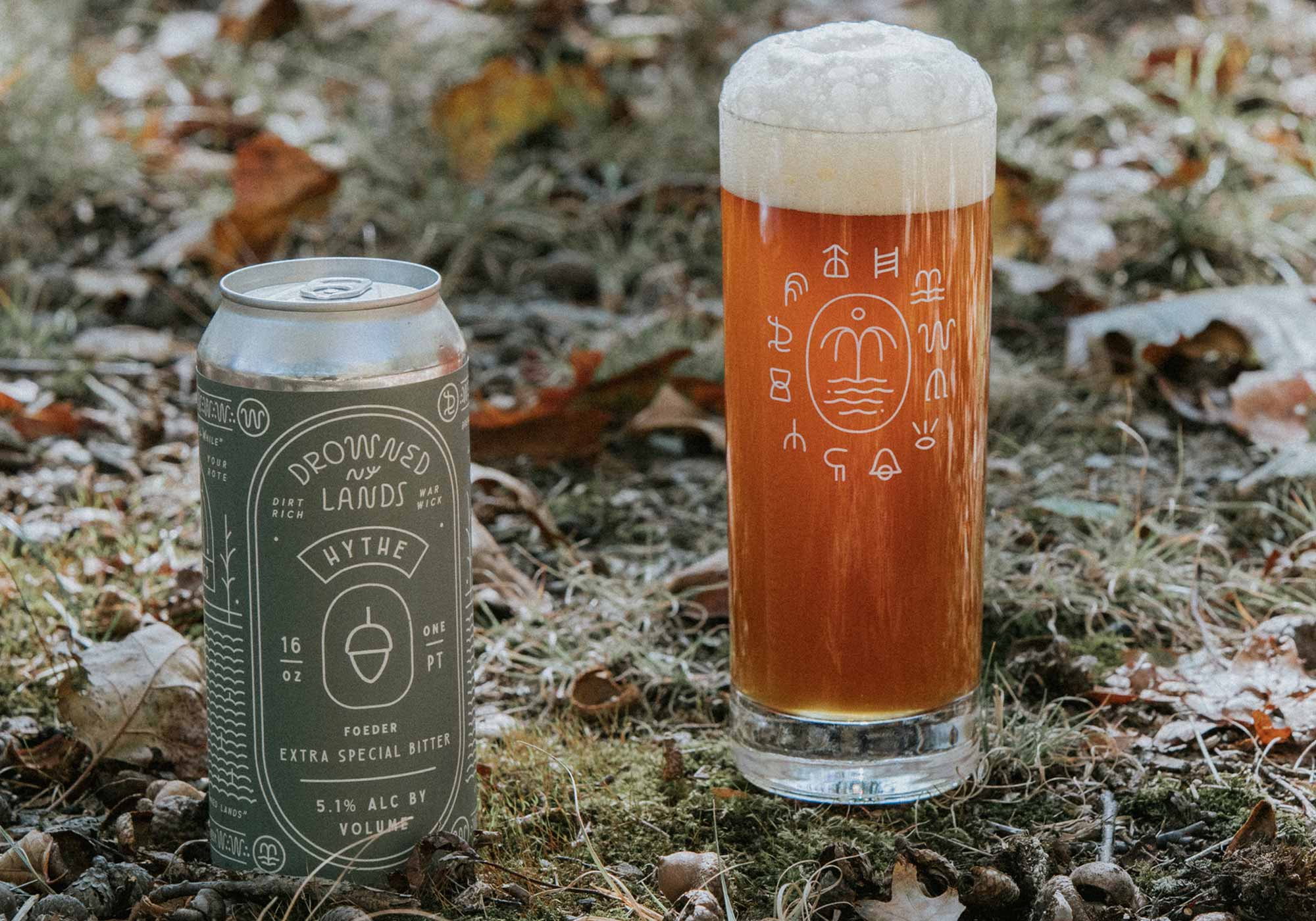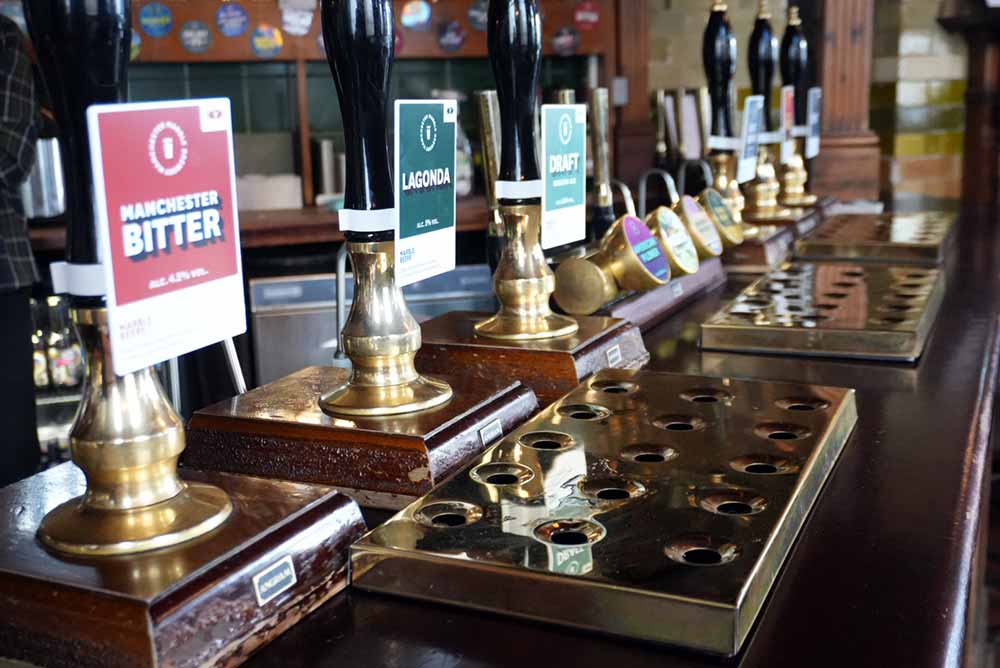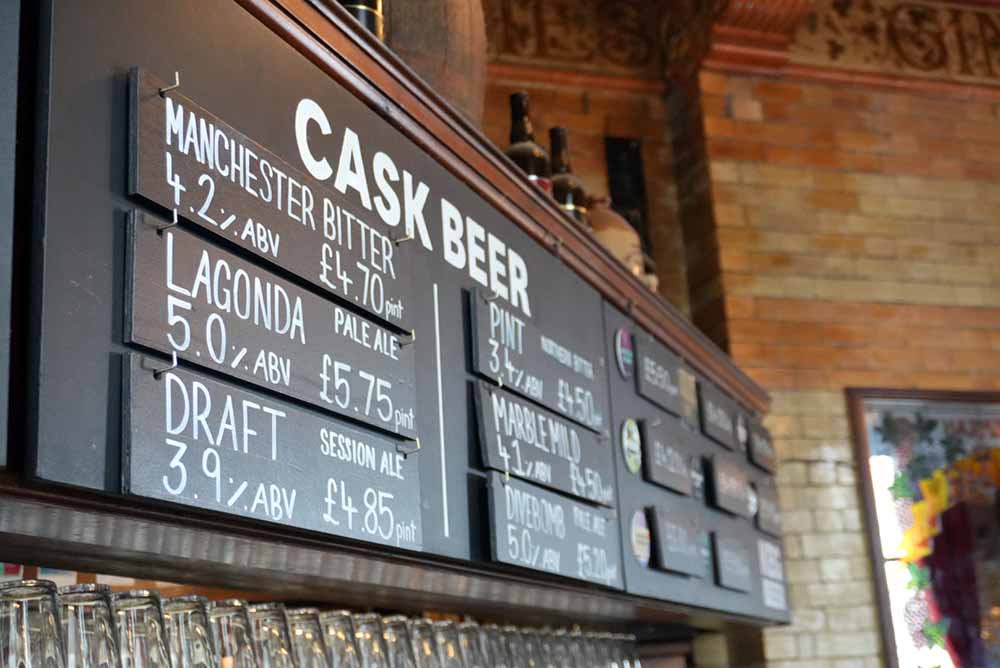Shop
What Is an English Bitter / Extra Special Bitter?
These beer are extra special.
The Top 3 Trending Stories on Beer Styles:
The name “English bitter” or “extra special bitter” is a bit of a misnomer. They’re English, they’re kind of special, but they’re not bitter at all, especially when compared to American West Coast- or New England-style IPAs. But in that case, what is an English bitter?
A British style extremely popular during the twentieth century, the English bitter, and its varying forms from ordinary to extra special bitter, was considered by some to be the national drink of England.
They’re malt-forward, sessionable beers that balance English malts, hops, and yeast. Here in the United States, the style has taken a backseat to hazy IPAs, fruited sours, and pastry stouts. But they’re worth learning about and definitely worth drinking!
What Defines an English Bitter?
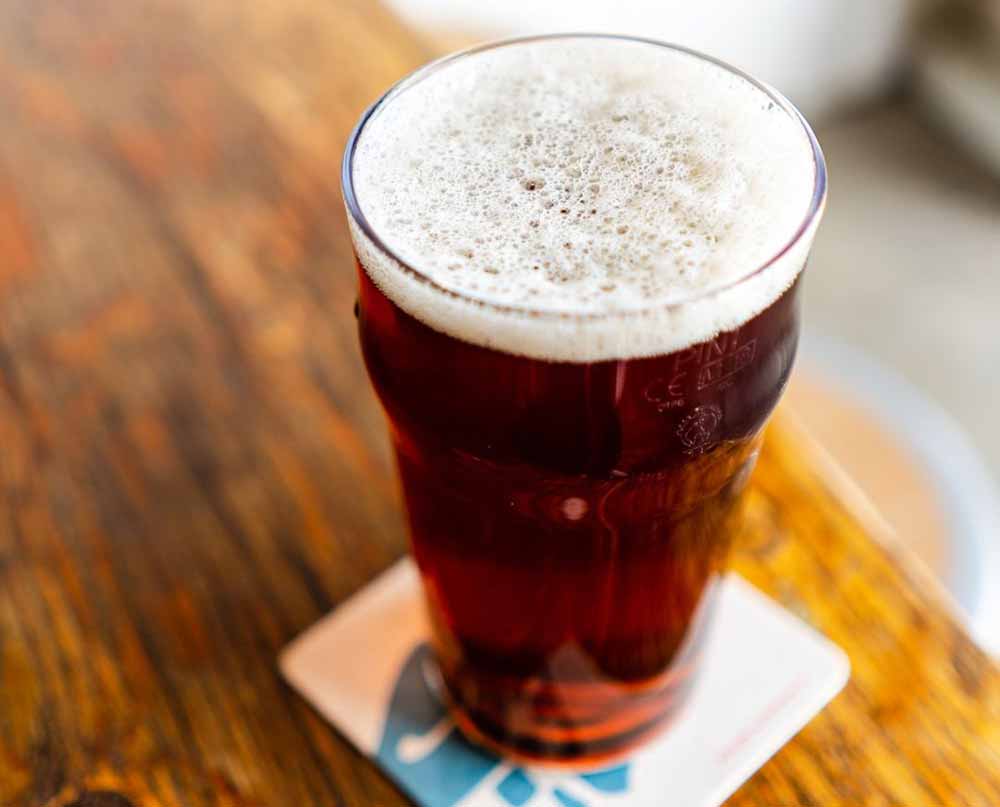
Photography courtesy of MacLeod Ale Brewing Co.
The English bitter and extra special bitter are beer styles that originated in England. Approachable and sessionable, these beers typically fall on the lower end of the alcohol content spectrum—somewhere below 5% ABV—and usually range from copper to gold in color.
To understand the importance of this style in English beer culture, we turn to the first line of the book “Manchester’s Best Beer Pubs and Bars,” from our good friend Matthew Curtis, who just spent time taking us around to all the best places to drink in Manchester.
“I’m convinced that if you were to cut a Mancunian, they would bleed best bitter,” Curtis writes.
This should tell you a lot about just how much the English love their ordinary, best, and extra special bitters. The liquid flows through their bloodstream, hearts, and souls.
Every place I visited during my time in the U.K. almost always had a best bitter on cask, including Harvey’s Sussex Best, Blackjack Pub Ale Best Bitter, Chapter Brewing Blindfold Off best bitter, and Marble Beers Manchester Bitter, among others.
They all had two things in common: balance and drinkability.
“There are not a lot of defining characteristics to bitters, leaving room for considerable interpretation, but balance and drinkability is the key to a good ESB,” wrote our friends at The Hop Review in an article about English Bitters.
But we want to dig deeper.
Todd DiMatteo, the owner and brewer at Good Word Brewing & Public House in Duluth, GA, has been drinking English bitters since 2005. He says that an English bitter needs to “have a nice balance of malt character with a bitterness level right in line with how big the beer is. It’s something that’s pretty drinkable with a nice bitter finish, but not something extremely hoppy.”
What’s the Difference Between English Bitter and English-Style Bitter?
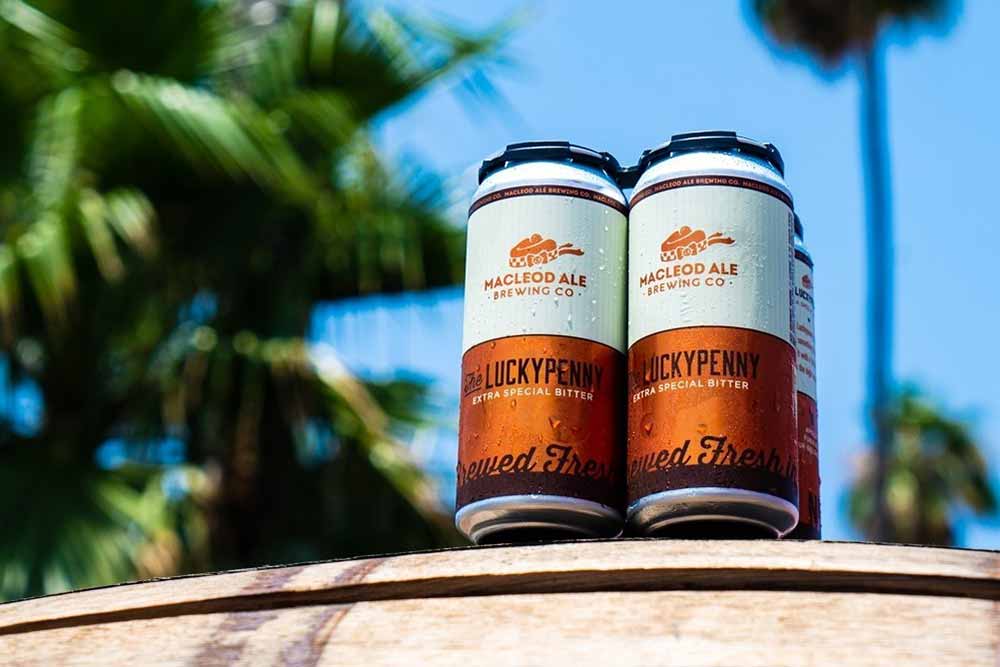
Photography courtesy of MacLeod Ale Brewing Co.
If you’re learning about the English bitter style, you’ll probably come across a variety of terms, including “English-style bitter” and “extra special bitter” or “ESB.”
While there’s no official appellation for the English bitter like there is with lambic beer, which can only be made in the Zenne River Valley of Belgium, many English brewers believe that you can only make a proper English bitter in England. Out of respect for tradition, some American brewers choose to use the term English-style bitter when brewing this beer type in the United States.
Okay, one mystery solved, but….
What’s the Difference Between English Bitter and Extra Special Bitter (ESB)?
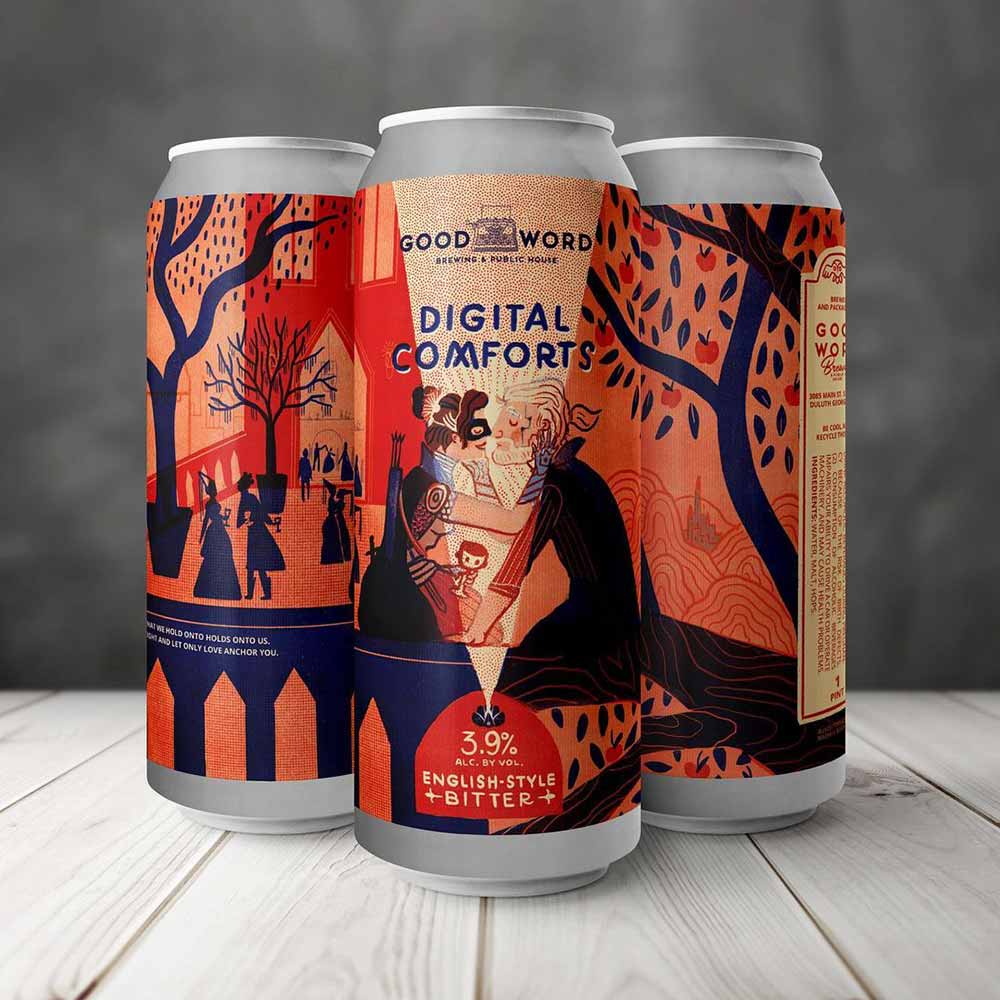
Photography courtesy of Good Word Brewing & Public House
Traditional English bitter comprises three subcategories: Ordinary bitter, best bitter, and premium bitter or extra special bitter (ESB).
“The main difference between these three different styles is alcohol content and the starting gravity of the beer,” says Stephen Reeves, Head Brewer at MacLeod Ale Brewing Co., an award-winning craft brewery in Van Nuys, CA, with a heavy focus on British and American ales and lagers. Ordinary bitters have the least alcohol, and premium or ESBs have the most.
Travis Lancaster, former Head Brewer at The Drowned Lands, echoes this sentiment. “The classic difference between English bitter and extra special bitter (ESB) is strength,” says Lancaster. He points out that when he brewed Nipperkin at The Drowned Lands, he considered it an English-style bitter.
“We were approaching it from somewhere between ordinary-best,” he says. “Low ABV, low-medium malt character, and moderate bitterness.”
But with Hythe, The Drowned Lands’ foeder-fermented ESB, he says, “We relied on a fairly strong bitterness to balance between the oak and the higher percentage of high-Lovibond Crystal malt we were using to get that strong malt character associated with ESB.”
To break it down, just look at this handy chart:
Ordinary bitter – Lowest ABV (usually around 3.2% to 3.8% ABV). Low bitterness (25 to 35 IBUs). An easy-drinking, sessionable beer.
Best bitter – Medium-ABV (anywhere from 3.8% to 4.6% ABV). Still low bitterness (25 to 40 IBUs). Medium maltiness. Again, drinkability is key.
Premium or extra-special bitter – Highest ABV (anywhere from 4.6% to 6.2% ABV). Highest maltiness and bitterness of the three (30 to 50 IBUs). Considered more premium and higher quality.
In other words, an extra special bitter or ESB is just a high-ABV version of an English bitter.
The History of the English Bitter
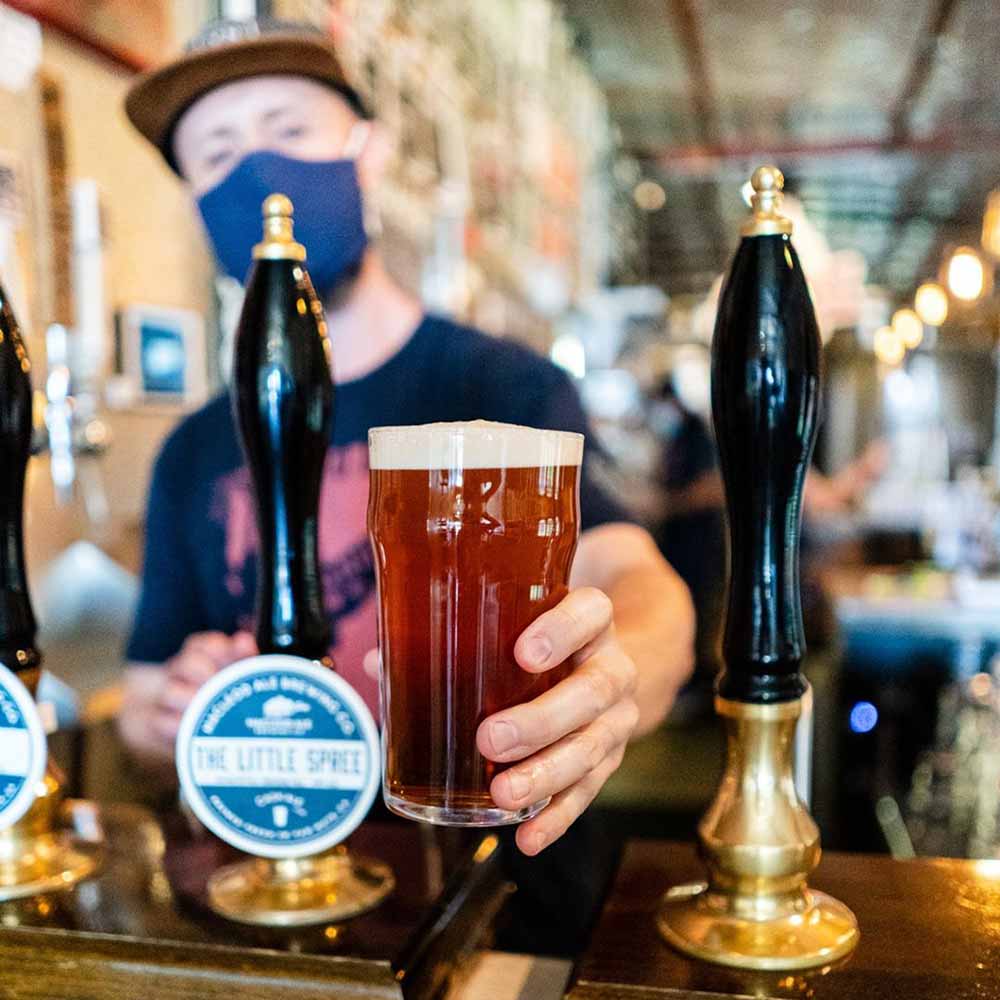
Photography courtesy of MacLeod Ale Brewing Co.
Originating in England in the 1600s, the English bitter became popular in the industrial town of Burton on Trent in East Staffordshire, England. Brewers in the area used local water with an unusually high calcium sulfate content and created an almost hop-like flavor. When paired with classic English malts like British pale malt and Maris Otter, the English bitter was born.
During the 1930s and through World War II (WWII), English bitters became very fashionable because consumer palettes shifted away from the dark-style ales. English bitters provided a paler, lighter, lower-ABV alternative. Post-WWII, the English bitter grew in popularity, becoming known as a high-quality, premium product.
In the modern era, English hops such as Fuggles and East Kent Golding add that earthy hop character to the beer. But it’s still the use of English ingredients that define this beer.
An English Bitter Starts with English Ingredients
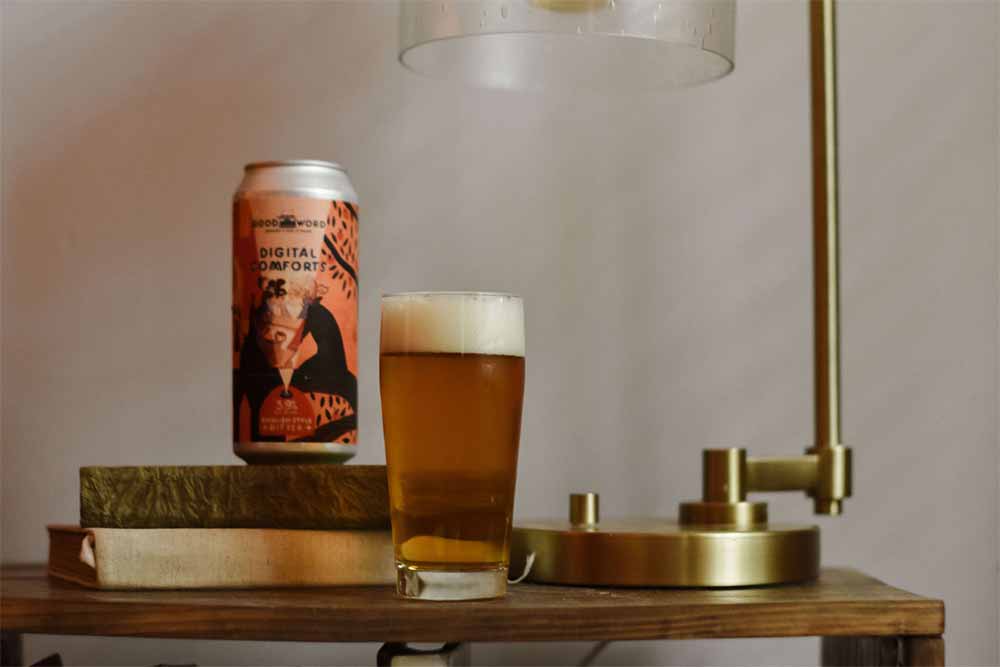
Photography courtesy of Emily Ryan | Good Word Brewing & Public House
An English bitter starts with English ingredients, from the malts to the hops to the yeast.
For example, in Good Word’s Digital Comforts English bitter, DiMatteo uses traditional English Crystal malt and Maris Otter as the base. Additionally, he includes English hops such as East Kent Goulding (EKG) and Fuggle.
Similarly, Mike Kraai, Founder of The Drowned Lands Brewery in Warwick, NY, uses predominantly English ingredients in Nipperkin. English malts like Maris Otter and British Light Crystal, along with the Target, EKG, and Olicana hops, help create that aforementioned balance.
“English malt, English hops, and English yeast,” says Kraai. “When you think about an English bitter, it’s one of those unique beers where you’re trying to blend all three of those together. If you balance those well, you have a really good English bitter.”
In other words, the malt shouldn’t dominate, the beer shouldn’t be hop-forward, and the yeast shouldn’t drive the flavor profile. All three need to play nicely.
“With other beers … it’s usually just one of those ingredients standing out,” says Kraai. “If you’re brewing a traditional hefeweizen, the yeast will take over the beer. When brewing an IPA, hops are obviously the most prevalent ingredient. And in a stout, it’s all about the grain.”
It’s this delicate harmony that makes English bitters so tricky to brew.
Is it Hard to Brew an English Bitter?
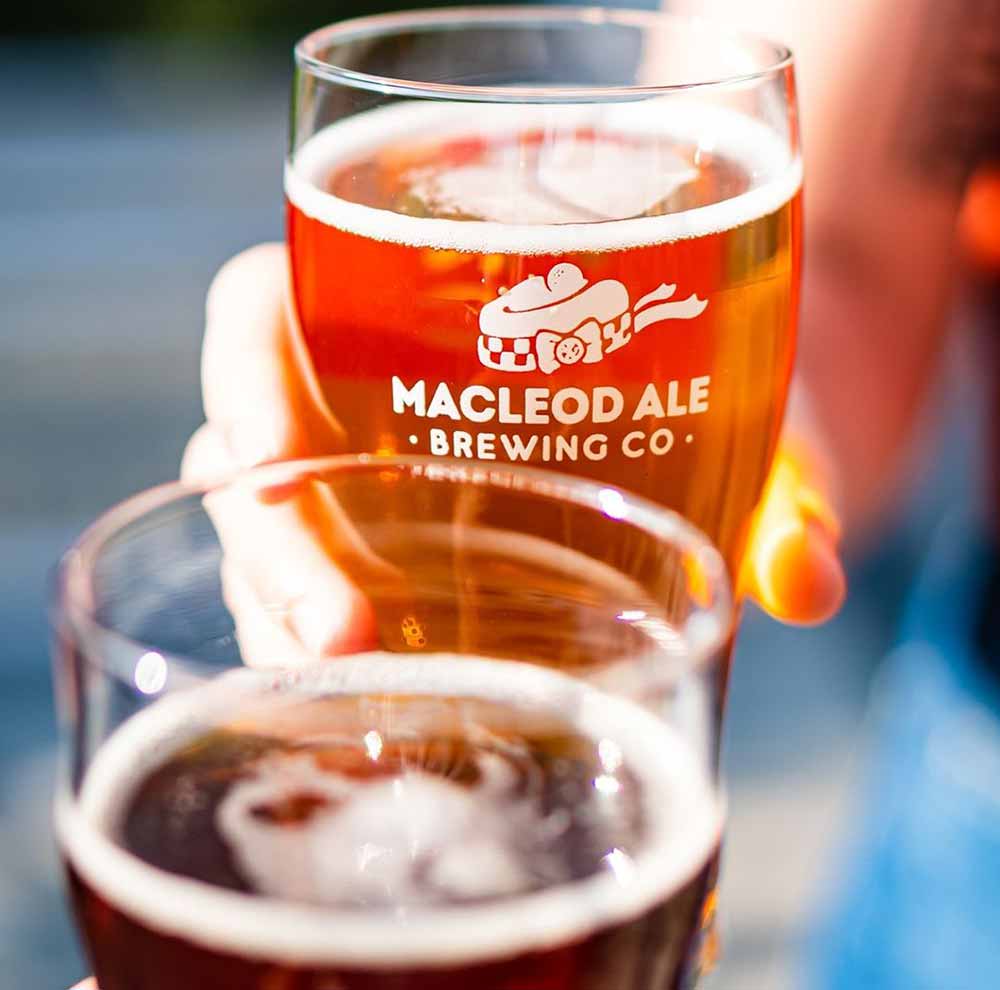
Photography courtesy of MacLeod Ale Brewing Co.
“It’s a little more complex and harder to create such a balanced product,” says Reeves. “It’s easy to throw a bunch of hops into a beer and make it extremely hoppy and bitter. But to play with the malt complexity and hop character and blend those two things together in a harmonious fashion isn’t the easiest thing to do.”
Moreover, there’s nowhere to hide any off-flavors.
“To me, ESB is difficult to perfect because it needs to be balanced yet have all of the ingredients firing on all cylinders,” says Lancaster. “The perfect ESB requires a heavy hand with the Crystal malt, but it can’t be cloying, and it can’t completely mask the wonderful biscuit character of the Maris Otter.”
Lancaster continues, “It requires a firm back-of-the-throat bitterness, but not the kind that scrapes your taste buds, just the kind that makes you want to take another sip. And it requires you to ferment at just the right temperature to unlock those irreplaceable stone fruit esters.”
Again, it all comes back to balance.
So, Why Is There “Bitter” in the Name?
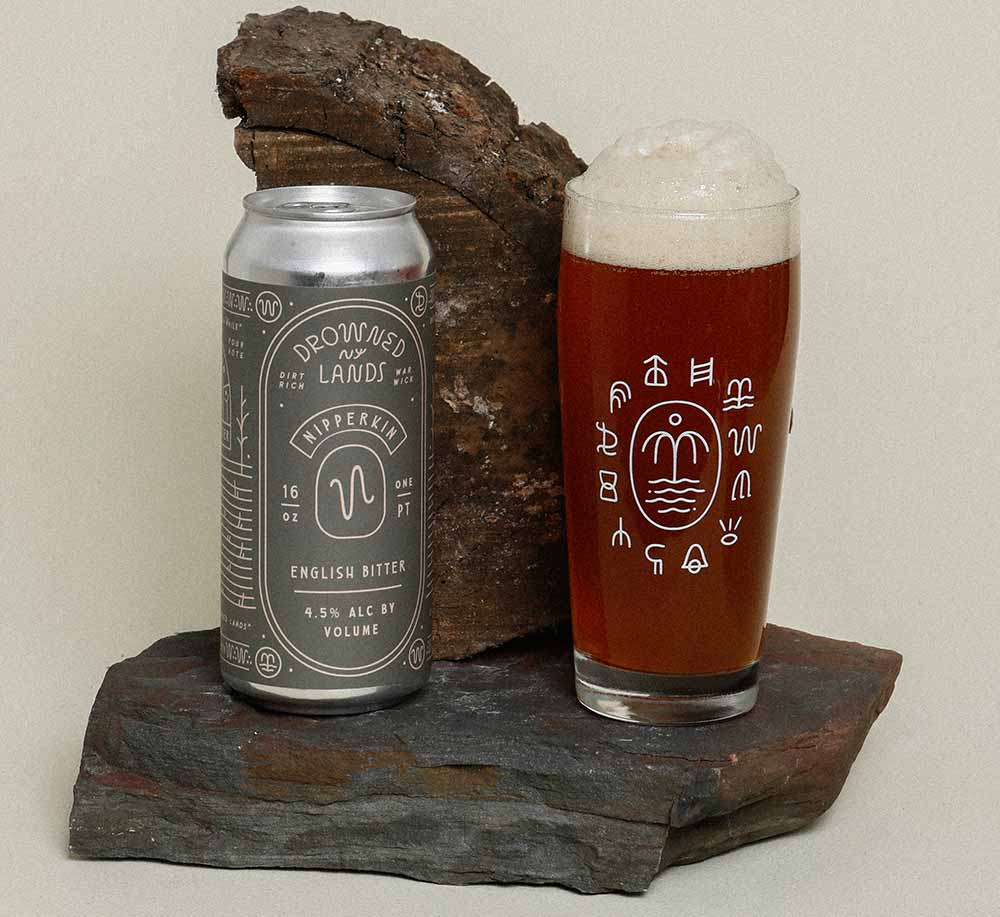
Photography Courtesy of The Drowned Lands Brewery
Names can be deceiving.
“The beer itself isn’t bitter,” says Kraai. “There’s certainly hop character and you do get a bitter charge, but you’re not killing it in IBUs. You’re not trying to have a mouth-puckering bitterness. It’s more just to complement those sweet malts.”
According to DiMatteo, these beers should be 20 IBUs (the globally accepted unit of measurement for bitterness), which isn’t very bitter at all.
To understand why these beers were called “English bitters,” you must put the term “bitter” into context. When this style originated, even a slight bitterness was quite bitter.
“The naming is odd for Americans,” says Reeves. “But in reality, you have to put your palate into the early 20th-century palate. To people who lived back then, this product was more bitter than the typical porters, stouts, and styles of the time.”
Today, American beers have blown out the bitterness scale. Certain styles—and especially IPAs—reach upwards of 100 IBUs.
The critical thing to remember about English bitters is that they’re sweet, malt-forward beers balanced with light hop bitterness.
What Do English Bitters Taste Like?
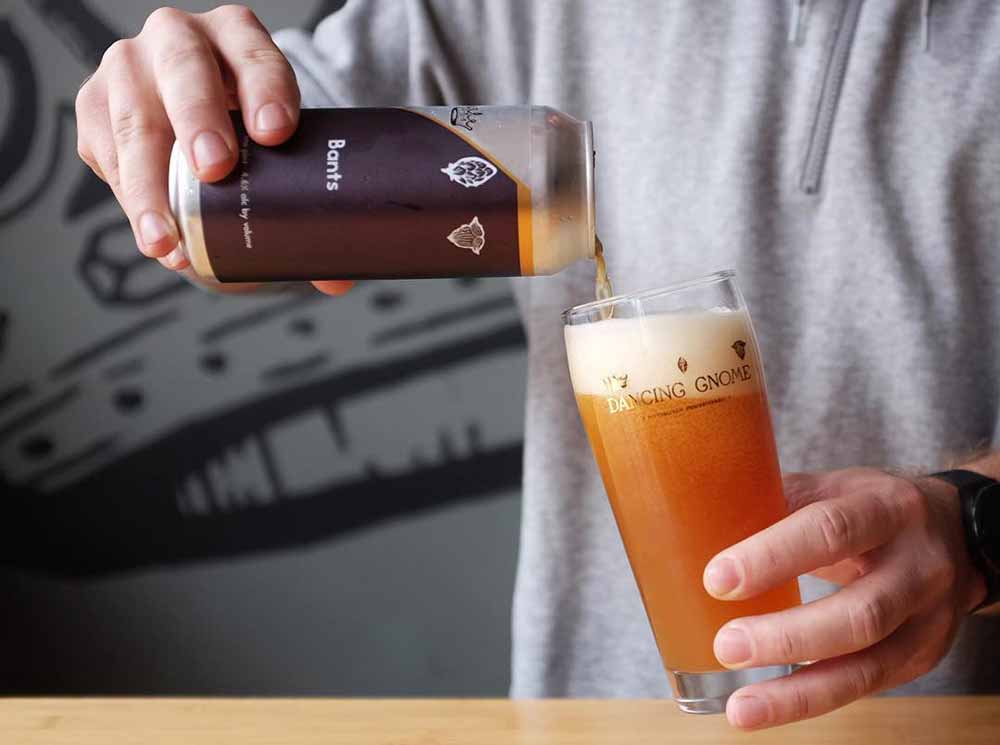
Photography courtesy of Dancing Gnome
Today, most English bitters feature a dominant malt color and character alongside a moderate bitterness and hop flavor. Here are some of the typical characteristics:
Appearance
According to the Beer Judge Certification Program’s 2015 Style Guidelines, English bitters will appear “pale amber to light copper color with good to brilliant clarity and low to moderate white to off-white head.”
For example, Reeves says MacLeod Ale’s The Luckypenny ESB, which won a bronze at the 2021 California Craft Brewers Cup, “is crystal clear and has that bright amber, copper, translucent look.”
Aroma
The aroma of a typical English bitter is sweet, but not candy sweet. It’s a bready sweetness with a touch of an herbal note from the English hops.
Taste
Reeves likens English bitters to a great cup of tea.
“In my personal opinion, [English bitters] have a lot of tea-like qualities,” he says. “Light sweetness, biscuit, toast, and nuttiness.”
Kraai agrees, citing tea as another approachable way to describe this beer. “I get a little bitterness, caramel sweetness, and herbaceousness,” he says.
Often creamy upfront, English bitters usually finish light with a somewhat dry and clean bitterness. That first sip should have a complex malt backbone, but the finishing one should add a bit of hop character that’s dry enough to make you want to take another.
What Are Some Good English-Style Bitters to Try?
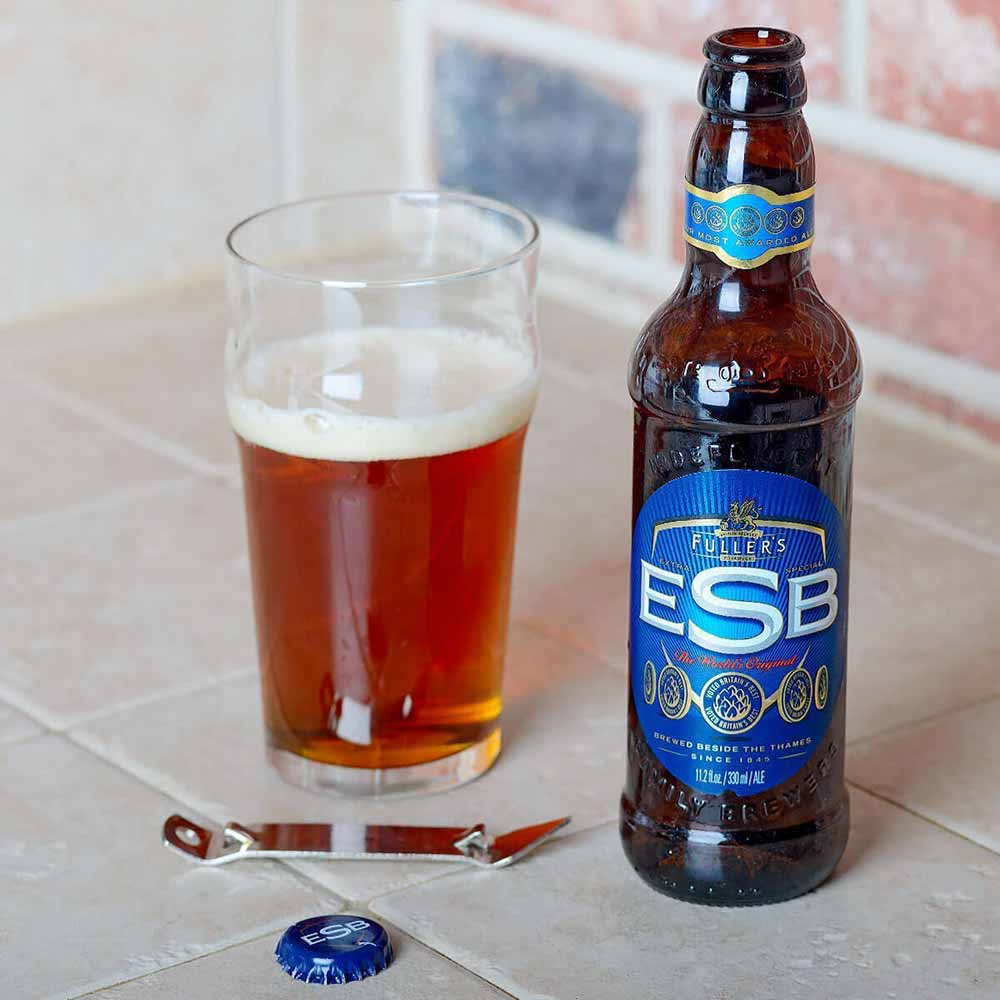
Photography courtesy of Absolute Beer
ESB – Fuller’s Griffin Brewery
London, England
Extra Special Bitter – Launched in 1971, Fuller’s ESB has become a classic version of the style from an English brewery. The beer is a strong, full-bodied, mahogany-colored ale brewed with pale ale and Crystal malts. A double winner of the World Champion Beer award, this ESB has often been dubbed The Champion Ale. Fuller’s ESB is a great place to start for someone who wants a traditional English version.
Best Bitter – Bathams Brewery
Birmingham, West Midlands, England
Best Bitter – The highest-rated best bitter on BeerAdvocate, Best Bitter from Bathams Brewery is considered a bit of a classic. The straw-colored bitter from an area of England known as the Black Country is an archetypal version of the style. Much like Fuller’s ESB, Bathams’ Best Bitter gives you a great starting point when exploring this style.
As the brewery writes in the beer’s Untappd description, “Probably the best example of the traditional Black Country style of bitter. No better partner to a lunchtime snack!”
Manchester Bitter – Marble Beers
Manchester, Greater Manchester, England
Best Bitter – Manchester has always been a beer town. A working-class city through and through, Cottonopolis, as it was once dubbed, made a name for itself in the late eighteenth century as the epicenter of the U.K. cotton industry, textiles, and mines. With more people moving to this thriving industrial city, a wave of pubs quickly followed. After a brief stint of microbreweries coming and going throughout the 1980s, one particular decision from one particular brewery changed the course of beer in Manchester (and perhaps largely the rest of the U.K.) forever.
As Curtis describes in his book, in 1997, Jan Rogers, who ran the Marble Arch pub, had to do something to increase foot traffic. The choice? Either start a karaoke night or a brewery.
“Thankfully, she decided on the latter,” writes Curtis, noting she installed a five-barrel system in the pub’s back room. “Marble’s influence on Manchester’s beer culture cannot be overstated: not merely for the excellent beers it has continued to produce over its 25-year-plus history, but for the sheer number of now-prestigious brewers who began their careers there, each of them helping to define modern British beer culture in their own small way.”
Beers like Manchester Bitter, the brewery’s traditional core inspired by a Manchester stalwart. According to the beer’s Untappd description, specialty malt gives Manchester Bitter its deep golden color along with its robust bitterness and floral, lemony aroma.
Boltmaker – Timothy Taylor’s Brewery
Keighley, West Yorkshire, England
Best Bitter – A winner of several awards from the Campaign for Real Ale (CAMRA), including Supreme Champion Beer of Britain in 2014 and Champion Beer of Britain – Bitter category in 2016, Boltmaker should be top of your list to try.
This well-balanced Yorkshire Bitter ranks second on BeerAdvocate’s all-time list of outstanding English bitters for its “full measure of maltiness and hoppy aroma.”
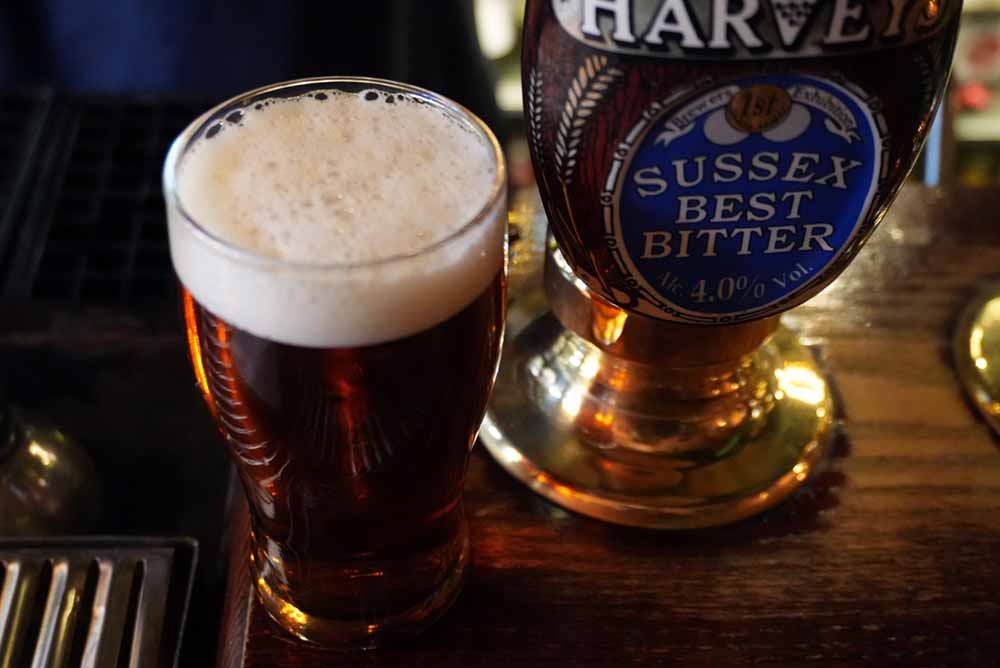
The Harp General Manager Paul Sims pours us a half pint of Harvey’s Sussex Best Bitter | Photography courtesy of Grace Lee-Weitz | Hop Culture
Sussex Best – Harvey’s Brewery
Lewes, East Sussex England
Best Bitter – The oldest independent brewery in Sussex, Harvey’s was started in 1790 by John Harvey. Today the eighth generation of the Harvey family continues to own and work there, meaning this brewery has become a place of pride for many English drinkers.
Sussex Best is one of their most well-regarded beers, the one they’re known for across Sussex and the South Coast. I had the chance to drink one of Harvey’s best bitters on cask at The Harp, where general manager Paul Sims says he’s developed the perfect formula for tapping the perfect Harvey’s Sussex Best. Although he wouldn’t share the secret with me, he did graciously give me a tour of the cellar to get just a small peek into his process; it’s incredible.
“We get people that come up from the South Coast, where this is widely available in most pubs and say, you know what, your [Harvey’s Best Bitter] tastes better here than it does where it comes from,” Sims told me. “It’s taken a long time to figure out affect that flavor conditioning…[but] I learned what creates the best flavor profile; it’s all about timing, and one thing that I’ll never [tell] until I leave and pass it on to the new manager.”
Winner of of the World Beer Awards in 2019 and Champion Best Bitter of Britain title at CAMRA’s Great British Beers Festival in 2005 and 2006, Sussex Best had a distinct hoppy bite but with a pleasing malt complement.
Brewed with water filtered through the Sussex Downs for over thirty years, the brewery’s unique sixty-year-old yeast strain, and given the care it deserves from shepherds like Sims, Sussex Best feels like history in a glass.
Nipperkin – The Drowned Lands Brewery
Warwick, NY
Ordinary Bitter – The Drowned Lands’ English-style bitter Nipperkin includes English malts such as Maris Otter and British Light Crystal malts, along with the English hops Target, EKG, and Olicana, a newer English hop with fruity characteristics. At 5% ABV, “You can have two. You can have three. And you can drive home,” says Kraai. “Try having three double IPAs that are 8% ABV, and that just becomes difficult!”
Hythe – The Drowned Lands Brewery
Warwick, NY
Extra Special Bitter – The Drowned Lands puts a creative spin on this style by aging Hythe in a foeder. Maris Otter and double-roasted crystal malts build the grain profile with a blend of Target, EKG, and First Gold English hops.
Bants – Dancing Gnome
Pittsburgh, PA
Ordinary Bitter – Toasted biscuit and honey waft nicely throughout Bants. Balanced by a slight bitterness that gives the beer just enough body and a slightly dry finish, Bants clocks in at only 4.6% ABV.
“Dancing Gnome makes excellent bitters,” says DiMatteo. “They make great low-ABV beers in general, including many terrific English styles that I highly recommend.”
Digital Comforts – The Good Word Brewing & Public House
Duluth, GA
Ordinary Bitter – DiMatteo put a lot of work into this beer. In fact, he read an entire book on the style before brewing the brewery’s version of an English bitter.
For Digital Comforts, DiMatteo uses Maris Otter and Crystal malts along with very specific additions of hops. He does a sixty-minute addition of Magnum, a higher-alpha hop, just for bitterness, along with two twenty-five-minute additions of EKG and Fuggle hops and a final five-minute dose of EKG for aroma. The result is a brilliant version of an English bitter.
“On the menu, I wrote toffee and hints of leather,” says DiMatteo. The bitterness will be there, but very balanced. It’s super creamy upfront. And you get that nice mid-palate sweetness, but it finishes light and somewhat dry.”
The Luckypenny – MacLeod Ale Brewing Company
Van Nuys, CA
Extra Special Bitter – For The Luckypenny, Reeves uses English ingredients, including London Lager, Maris Otter, English pale malt, and EKG and Fuggle hops. According to Reeves, Fuggle is a hot-side flavor addition, while EKG goes into the whirlpool.
“Fuggles bring a lot of deep fruit and almost fruity, earthy characteristics, while Goldings brings more bright, herbal, earthy flavors,” says Reeves. Those two hops work in a harmonious way to create interesting hop characteristics in aroma and flavor that’s very complex but subtle.”
Ploosh – Marlowe Artisanal Ales
Mamaroneck, NY
Extra Special Bitter – Marlowe Artisanal Ales makes some of our favorite ales in the country. So it’s no surprise that the Mamaroneck-based brewery’s ESB, Ploosh, ranks among the top fifteen highest-rated ESBs on Untappd.
Brewed with English malts and hops, Ploosh is a fantastic example of an English-style bitter.
ESB – Art History Brewing
Geneva, IL
Extra Special Bitter – Art History goes a step above with its aptly named ESB, serving the traditional British style in a traditional British way—on cask. The Illinois-based brewery brews ESB with Maris Otter malt, chocolate, and crystal malts, and hops with whole-flower East Kent Golding, Challenger, and Fuggle to give this beer its characteristic woodsy aromas and balanced dryness.
The brewery writes in the beer’s Untappd description, “Finishes soft on the palate with flavors of caramel, toffee, and fig.”

